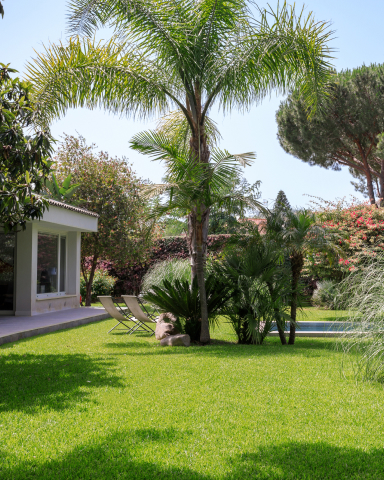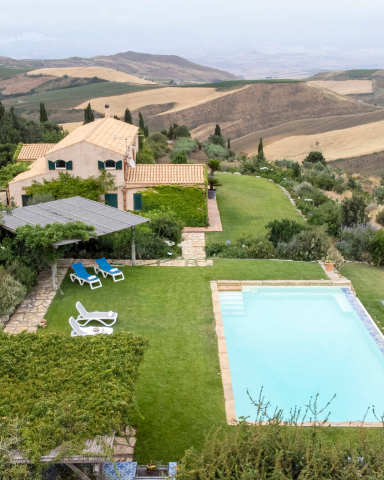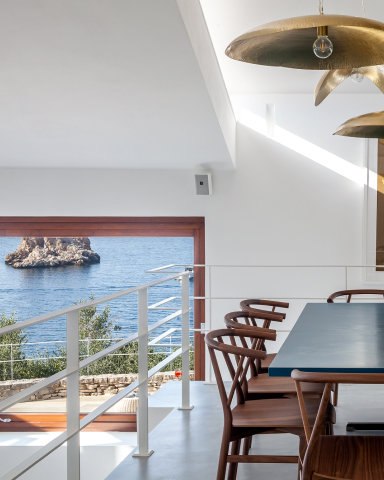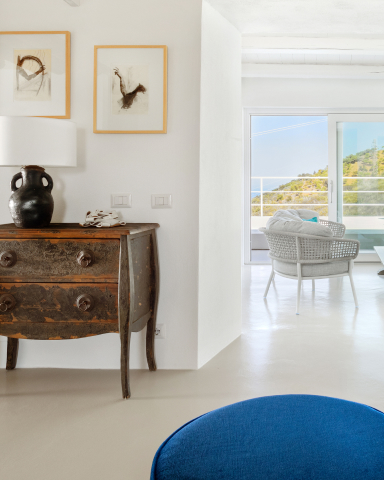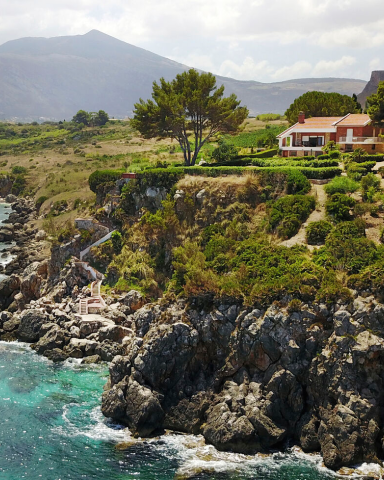Liberty Style Architecture in Sicily

Art Nouveau design in Italy

Palazzo Dato in Palermo
Towards the end of the 19th century, a new artistic and architectural movement took Europe (and parts of America) by storm. Art Nouveau, as it soon became known, cast off the shackles of restrictive traditions. It allowed designers to rediscover the joys of curvaceous form, non-representative design, floral motifs and cutting-edge techniques.
Art Nouveau's influences were not restricted merely to “art” but to all spheres of creativity. Fashion, furniture design, jewellery, lighting, wallpaper, textiles, interior design, decoration and architecture all fell under the spell of the new aesthetic.
As Art Nouveau spread, so it diversified, and soon each country had developed its own stylistic variant. Italian, and in particular Sicilian architects, were amongst the most passionate proponents of the new movement. Their version became known as Liberty Style, in homage to the designs of Liberty & Co, London’s renowned department store.
Liberty style in Palermo

Teatro Massimo, Palermo
The fin de siècle was one of Palermo’s golden ages. The huge wealth and high-powered connections of families such as the Florios and the Whitakers had turned the city into something of a playground for Europe’s elite. Architects were in great demand as the city’s wealthiest bid to outdo each other with ever more prestigious villas. Fortunately, this building boom coincided with the emergence of a group of inspired architects.
The name most commonly associated with the Liberty Style in Palermo is Ernesto Basile. Along with his father Giovan Battista, Basile was responsible for Palermo’s magnificent opera house, the Teatro Massimo. Giovan Battista had laid the stylistic foundations for Palermo’s Liberty movement with his seminal design for Villa Favaloro.
From his father’s architectural ideas Ernesto worked on a series of iconic buildings that still adorn Palermo's streets today. These include:
- Chiosco Ribaudo (1894) - situated in Piazza Verdi in front of the Teatro Massimo. Chiosco Ribaudo originally sold cold drinks, newspapers and tickets for the opera. Today it sells cigarettes, stamps and tickets for Palermo’s football matches.
- Villa Igiea (1899) - Basile was commissioned by Vincenzo Florio to carry out a complete redesign of an existing building. It is now a 5-star hotel located in a superb panoramic position above the harbour of Acquasanta
- Villino Florio (1902) - a strikingly original villa in Viale Regina Margherita. It is just off Via Dante and was commissioned by the heir to the Florio fortune
- Villino Ida (1904) – Ernesto Basile’s own family home in Via Siracusa, just off Via Liberta
Like many Art Nouveau architects and designers, Basile was involved throughout, from the original drawings to the last lick of paint. He oversaw every detail, ensuring that all the constituent parts were in keeping with his master plan.
Palermo’s flourishing Liberty Style was not a monopoly of the Basile family, however. There were other talented architects working in the city.
- Vincenzo Alagna (whose most famous work is Palazzo Dato - 1906 - in Via XX Settembre)
- Filippo La Porta (designer of Villino Caruso - 1908 - in Via Dante)
- Ernesto Armò (responsible for the palatial Villa Pottino - 1915 – Via Notarbartolo).
Merging historic and Liberty style designs

Antico Stabilimento Balneare, Mondello, Palermo
Palermo’s Liberty Style, like all forms of Art Nouveau, had its own distinctive characteristics. While drawing on common elements, Basile and his contemporaries also looked to Sicily's architectural history to inform their particular style.
Crenellations, turrets and grand wooden doors hint at Sicily’s myriad mediaeval castles. Arches, double lancet windows, slender marble columns, mosaics, Islamic art, and intricate mouldings echo the island’s Arab-Norman past. Dynamic late Sicilian baroque flourishes add a touch of Spanish flamboyancy to the mix.
Liberty Style buildings can be found throughout Palermo but most are concentrated in three main areas:
- The streets running parallel to Via Libertà between Piazza Politeama and Giardino Inglese. Sadly, many Liberty Style villas that once lined Via Libertà were demolished in the 1950s and 1960s. Areas also include Via Dante and its surrounding streets; and Mondello, Palermo’s seaside resort.
- Mondello, once a tiny fishing village, became popular with Palermo’s elite at the end of the 19th century. Soon Liberty Style summer villas were springing up at every corner. To serve these visitors, a bathing station (stabilimento balneare) was built in splendid Liberty Style by the architect Rudolf Stualker.
- While Palermo is the Liberty Style capital of Sicily, the movement spread across the island. Buildings inspired (and sometimes designed) by Ernesto Basile can be found in most towns and cities. Notable examples include the train station of Giardini Naxos, Palazzo Florio on Favignana, and Palazzo Bruno di Belmonte in Ispica.

We're Villa Matchmakers
Because our local experts have personally visited each of our destinations, we know exactly what makes them special. Tell us what your ultimate villa holiday looks like, and allow us take care of the rest.
